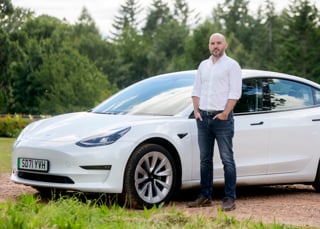After substantial decreases in used electric vehicle (EV) values in recent months, pricing experts believe that they are set to plateau in the second half of 2023.
Cap HPI says that numerous battery electric vehicle (BEV) models have now stabilised or appear close to a plateauing.
However, it says that a small number of used EVs remain weak and appear to still have some way to fall, with no common denominator or central theme governing how individual ranges are performing.
Dylan Setterfield, head of forecast strategy at Cap HPI, explained: “Many EV models are now looking good value, with trade values for the majority of models, where a comparison is possible, actually now below ICE equivalents.”
Setterfield says that there is “potential” for some to increase from their current used value position, but he added: “We assume further deflation in future and have factored this into our forecasts.”
Meanwhile, he said that there were also some “small positive adjustments” for the handful of models which have seen the heaviest falls.
June marked another month of contracting prices for used EVs, according to recently published data from the Auto Trader Retail Price Index, with the average retail value (£31,430) falling 19.1% year-on-year.
It made June the sixth consecutive month of year-on-year decline, with average EV prices falling by around £5,000 since January (£36,179) and nearly £9,500 since their peak in July 2022 (£40,728).
Dealers say used EV market has steadied
Cap HPI’s analysis comes as more than a third of used car dealers (36%) believe that the market for used EVs has now stabilised.
However, July’s Startline Used Car Tracker suggests that 20% of dealers expect to see further drops in value of up to 10%, while a further 30% believe that coming reductions will range between 10-20%.
Also, while 28% agree with the statement that the market is finding its level, 24% say that consumer demand for EVs remains limited.
Just 8% are concerned about the rapidly rising number of electric cars and vans that are soon expected to reach the used sector.
Paul Burgess, CEO at Startline Motor Finance, said: “The last year has been a turbulent one for the used EV market and many dealers have been left bruised by the reductions in values of stock that they have been holding.
“The picture now is pretty mixed, our research indicates. While more than a third think that the situation has stabilised, quite significant numbers believe that further falls are likely and some that those reductions will be pretty serious.
“An interesting point is that very few seem to be concerned about the huge numbers of ex-company car EVs that will quite soon start to hit the used market in comparatively large quantities.
“These will represent a significant step up in volumes and there will need to be a corresponding increase in demand if values aren’t to further suffer.”
Used car volumes increasing
Overall, the used car market in July is expected to continue to be relatively robust, continuing along the lines of the strength seen so far in 2023, albeit with a continuation of the differences seen by age, price point and fuel type.
Retail demand is likely to remain constrained over the short term, however, as the reality of the cost-of-living squeeze continues to make itself felt, and concerns remain over the impact of increasing interest rates on mortgage costs, says Cap HPI.
Used car volumes are also expected to slowly increase in the coming months, as fleets receive replacements for some long overdue vehicles.
As a result, Cap HPI believes modest negative movements for the next few months can be expected for most sectors.
Setterfield said: “The negative economic impact of any potential recession is expected to be outweighed by the reduction in used car supply already guaranteed by the lower new car registrations from the start of the pandemic onwards.
“Used car prices are not generally correlated with GDP growth, partly because there is a substantial element of core ‘needs purchases’ and also because reductions in consumer confidence and disposable income result in changes in used car buying, rather than preventing it; buyers may turn to older, smaller or higher mileage cars or turn to the used market instead of buying new.
“It is extremely hard to predict how retail demand will progress through the second half of 2023, especially given the complex economic situation.
“However, we still expect a gradual market adjustment over the next several months or so and certainly not a ‘mirrored’ fall from the earlier high point. The used value increases on some models have effectively set a new market and may not return to previous levels.”
New car supply
New car supply issues (including the semiconductor shortage) will remain and subject to frequent change for many OEMs, but most manufacturers are now experiencing improvements in supply on many models, which Cap HPI expects to continue.
There remain cases of derivative-specific impacts within the same model range, or individual options which continue to be difficult to obtain.
Setterfield concluded: “From the second half of 2023 onwards, we expect to see the positive impact of reduced used car supply as a result of more than 2.36 million fewer cars registered through the course of the pandemic, particularly from fleets – now equivalent to a whole year’s new car registrations in a normal market.”





















Login to comment
Comments
No comments have been made yet.